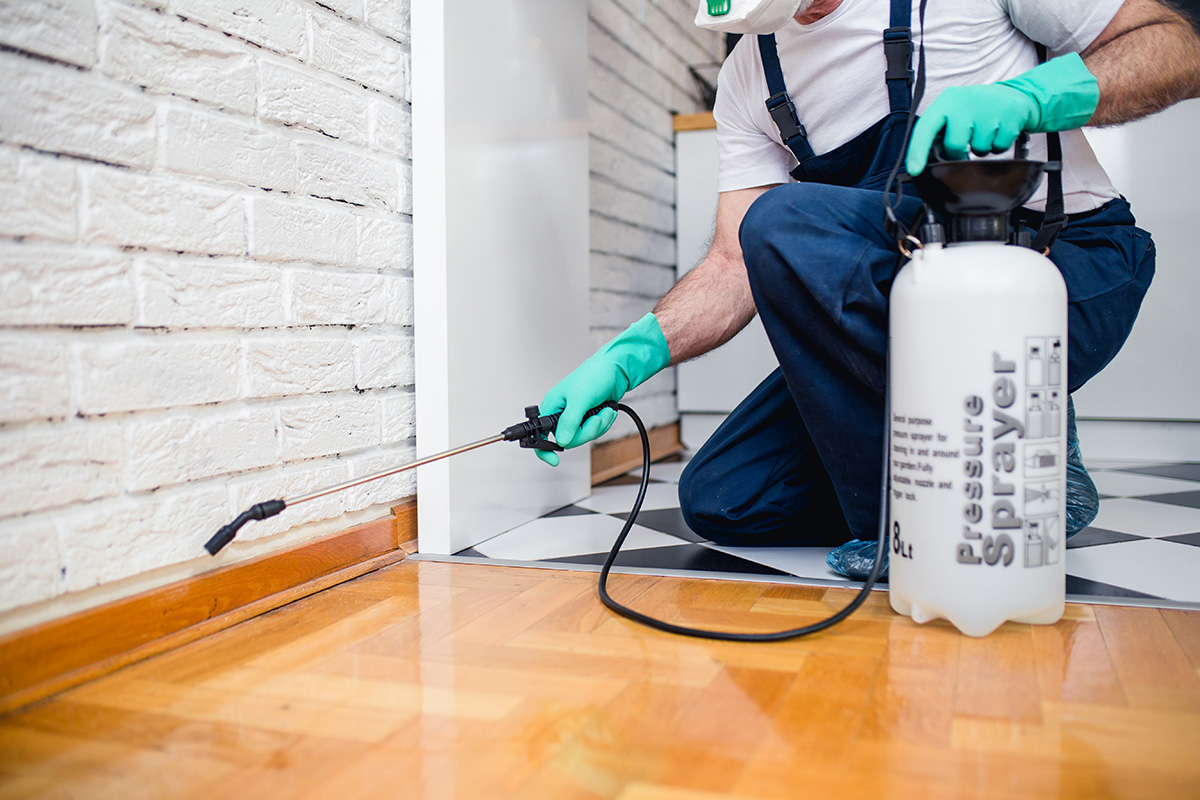Effective A1 Bed Bug Treatment in Charlotte - Safe and Proven Methods
Effective A1 Bed Bug Treatment in Charlotte - Safe and Proven Methods
Blog Article
Bed Bug Treatment Break Down: Comparing Chemical Vs. Non-Chemical Solutions
In the realm of bug control, particularly when handling the persistent concern of bed pests, the choice between chemical and non-chemical treatment services can be an essential one. Both approaches offer distinctive advantages and disadvantages, influencing factors such as performance, safety considerations, and total price. By analyzing the nuanced information of each approach, a more clear understanding of which course to seek in addressing a bed pest invasion can be achieved.
Effectiveness of Chemical Therapies
Chemical treatments for bed insect infestations have been widely recognized for their rapid and powerful efficiency in removing these pests. When considering the effectiveness of chemical treatments, it is important to comprehend that they can give a thorough and quick service to a bed bug problem. Professional pest control experts often depend on insecticides to target bed insects at various phases of their life process, consisting of eggs, fairies, and adults. These chemicals normally function by interfering with the bed pests' nerves, bring about paralysis and eventual fatality.
Moreover, chemical treatments have the benefit of offering residual results, suggesting that they can remain to get rid of bed bugs also after the initial application. This recurring action is specifically beneficial in combating any type of possible re-infestations. Furthermore, the rapid activity of chemical treatments can bring alleviation to individuals facing extreme bed pest problems, enabling them to regain control of their living spaces rapidly.
Safety And Security Worry About Chemical Solutions
One critical aspect that needs mindful consideration when utilizing chemical options for bed bug therapy is guaranteeing the security of passengers and the setting. While chemical therapies can be reliable in getting rid of bed pests, they may position dangers if not managed appropriately. Among the primary security worry about chemical remedies is the possible harm they can cause to human health. Exposure to specific chemicals utilized in bed bug treatments can bring about respiratory system concerns, skin irritability, or various other negative reactions, especially in people with pre-existing problems or level of sensitivities. Furthermore, inappropriate application or dose of chemical pesticides can cause hazardous residues lingering in the cured location, presenting long-lasting health dangers to owners.
Moreover, the environmental influence of chemical solutions is one more significant consideration. Some pesticides made use of in bed insect therapies may be damaging to beneficial insects, wild animals, and communities if they leach right into the soil or water supply. It is necessary to utilize chemical treatments carefully, following security standards, and taking into consideration much less poisonous options to minimize these risks and ensure the reliable and safe monitoring of bed bug invasions.
Advantages of Non-Chemical Strategies
Thinking about the prospective safety problems and ecological influence connected with chemical services for bed insect treatment, discovering non-chemical techniques provides a promising choice with a number of unique advantages. Non-chemical therapies are eco pleasant, as they do not contribute to air or water pollution, making them a lasting option for insect control.
Additionally, non-chemical solutions can be efficient in targeting bed bugs, consisting of hard-to-reach areas where chemical treatments might not permeate. Techniques such as warmth therapy, vacuuming, steam cleansing, and bed mattress coverings offer detailed obliteration without making use of hazardous chemicals. In addition, non-chemical techniques can be less turbulent, requiring marginal prep work and permitting quicker reentry into dealt with areas. Generally, choosing for non-chemical bed bug therapy methods not only focuses on security and environmental defense but additionally makes sure comprehensive and effective parasite control.
Limitations of Non-Chemical Treatments

Furthermore, non-chemical treatments commonly require several applications to attain successful obliteration. This can be time-consuming and might not constantly ensure total removal of all bed bugs and their eggs, especially in hard-to-reach or hidden places.
In addition, the success of non-chemical visit homepage treatments heavily depends on appropriate execution and thoroughness, which can be testing for people without professional experience. Insufficient application of non-chemical techniques might result in incomplete elimination, leading to persistent invasions and the demand for added therapies.
As a result, while non-chemical therapies have Get More Info their benefits, it is important to acknowledge these restrictions and consider them when identifying one of the most reliable approach for managing bed bug problems.
Cost Contrast: Chemical Vs. Non-Chemical Options
Given the constraints linked with non-chemical treatments, a vital facet to assess in the context of bed pest management is the expense contrast in between chemical and non-chemical options. In contrast, non-chemical therapies like heat therapy or vapor can be a lot more expensive, with expenses varying from $1,000 to $6,000 for an entire home. While the first expense of chemical therapies may appear lower, several therapies might be required to completely eradicate the problem, potentially raising the overall expense.
Conclusion

Considering the possible safety and security problems and environmental influence associated with chemical services for bed insect treatment, discovering non-chemical techniques offers an appealing choice with a number of distinctive benefits.Provided the constraints connected with non-chemical therapies, a crucial aspect to review in the context of bed bug administration is the expense comparison in between chemical and non-chemical options. In contrast, non-chemical treatments like warm treatment or heavy steam can be more expensive, with expenses ranging from $1,000 to $6,000 for a whole home. While the first cost of chemical treatments may seem lower, several therapies may be required to totally remove the invasion, possibly raising the overall cost.In pest supplies online final thought, when contrasting chemical and non-chemical bed bug treatment options, it is crucial to take into consideration effectiveness, security, advantages, limitations, and price.
Report this page